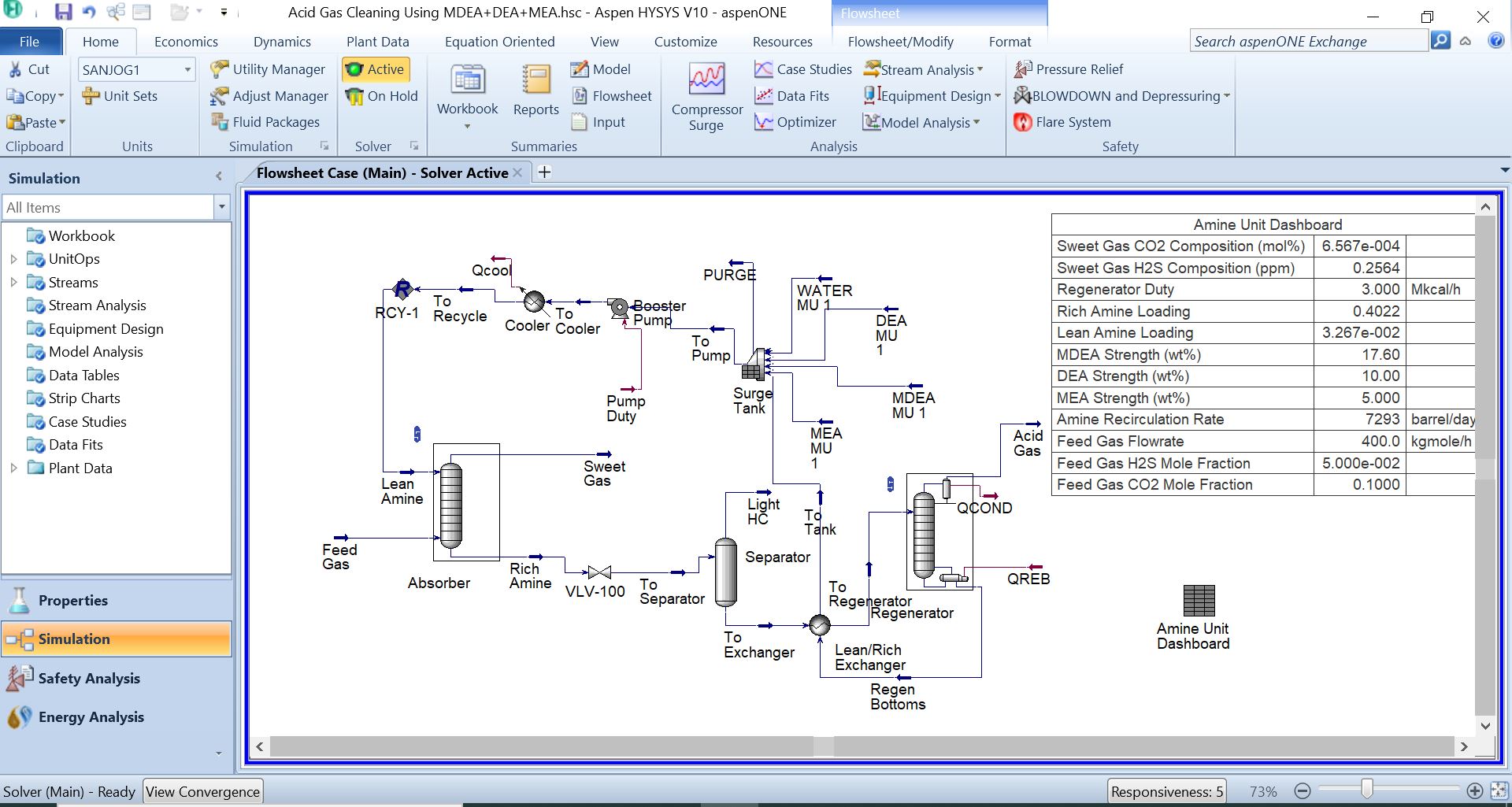AspenTech Webinar : A Deep Dive into Acid Gas Cleaning in Aspen HYSYS

About Course
Introduction
The new Acid Gas Cleaning capability in Aspen HYSYS allows users to more rigorously simulate gas processing from beginning to end, including the removal of acid contaminants. This new feature allows users to model:
• Amine treating for gas sweetening
• Sulfur removal, including hydrogen sulfide, mercaptans, COS, and CS2
• Carbon dioxide removal
• Amine regeneration
• Amine degradation
• Tail gas treating
• Gas-liquid and liquid-liquid treating
• Systems with physical solvents
This feature is a part of Aspen HYSYS, which allows users to seamlessly integrate it with existing models for gas processing, making modeling easier and more accurate.
Amine gas treating, also known as amine scrubbing, gas sweetening and acid gas removal, refers to a group of processes that use aqueous solutions of various alkylamines (commonly referred to simply as amines to remove hydrogen sulfide (H2S) and carbon dioxide (CO2) from gas. It is a common unit process used in refineries, and is also used in petrochemical plants, natural gas processing plants and other industries.
Processes within oil refineries or chemical processing plants that remove hydrogen sulfide are referred to as “sweetening” processes because the odor of the processed products is improved by the absence of hydrogen sulfide. An alternative to the use of amines involves membrane technology. However, membrane separation is less attractive due to the relatively high capital and operating costs as well as other technical factors.
Many different amines are used in gas treating:
- Diethanolamine (DEA)
- Monoethanolamine (MEA)
- Methyldiethanolamine (MDEA)
- Diisopropanolamine (DIPA)
- Aminoethoxyethanol (Diglycolamine) (DGA)
The most commonly used amines in industrial plants are the alkanolamines DEA, MEA, and MDEA. These amines are also used in many oil refineries to remove sour gases from liquid hydrocarbons such as Liquified Petroleum Gas (LPG).
These sample cases can serve as a starting point for your modeling, as they have a completed setup Properties Environment and a completed flowsheet in the Simulation Environment. You can start with one of these example files and edit some basic input parameters to have a case ready for simulation. The following example cases are available:
• Acid Gas Cleaning Using a Physical Solvent (DEPG)
• Acid Gas Cleaning Using DEA
• Acid Gas Cleaning Using DGA
• Acid Gas Cleaning Using DIPA
• Acid Gas Cleaning Using MDEA
• Acid Gas Cleaning Using MDEA + DEA
• Acid Gas Cleaning Using MDEA + DEA + MEA
• Acid Gas Cleaning Using MDEA + MEA
• Acid Gas Cleaning Using MDEA + Piperazine
• Acid Gas Cleaning Using MEA
• Acid Gas Cleaning Using PZ
• Acid Gas Cleaning Using SULFOLANE-DIPA
• Acid Gas Cleaning Using SULFOLANE-MDEA
• Acid Gas Cleaning Using SULFOLANE-MDEA-PZ
• Acid Gas Cleaning Using TEA
• Effect of H3PO4 on Acid Gas Cleaning Using MDEA
• Effect of Heat Stable Salts on Acid Gas Cleaning Using MDEA
• Liquid-Liquid Treating Using MDEA
• Acid Gas and COS-CS2-Mercaptans Cleaning Using MDEA
For this tutorial, we will show the basic workflow for creating a model for Acid Gas Cleaning using MDEA.
Thanks to,
Manya Garg, Product Management
Irina Rumyantseva, Product Marketing
Source-
www.aspentech.com
Course Content
AspenTech Webinar : A Deep Dive into Acid Gas Cleaning in Aspen HYSYS
-
Acid Gas Removal unit Modeling in Aspen HYSYS
01:08:49
